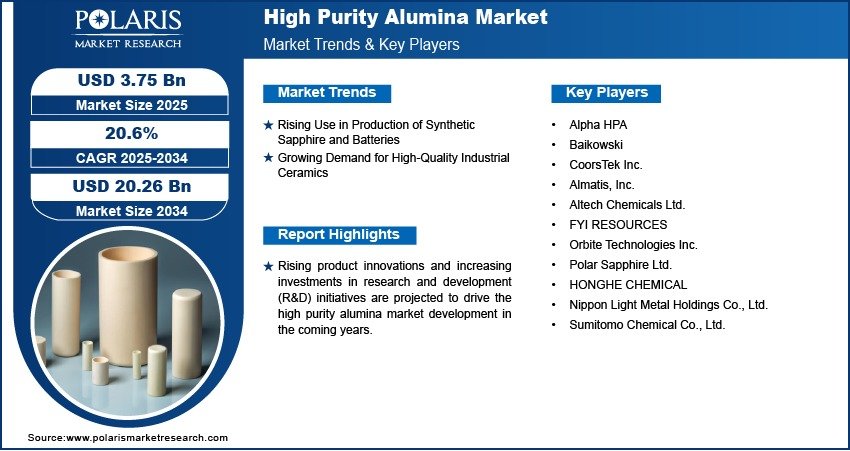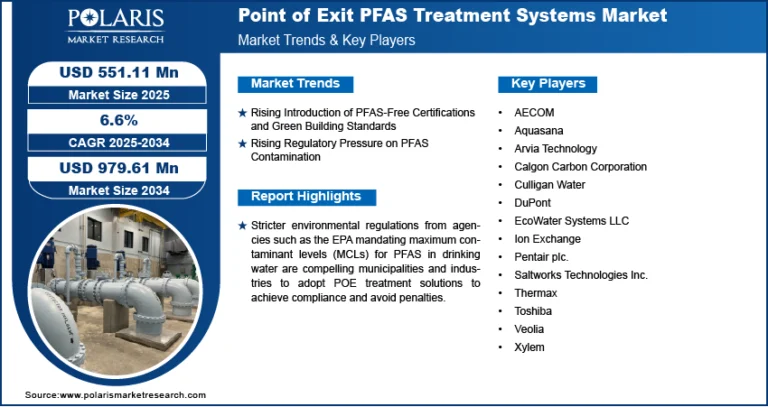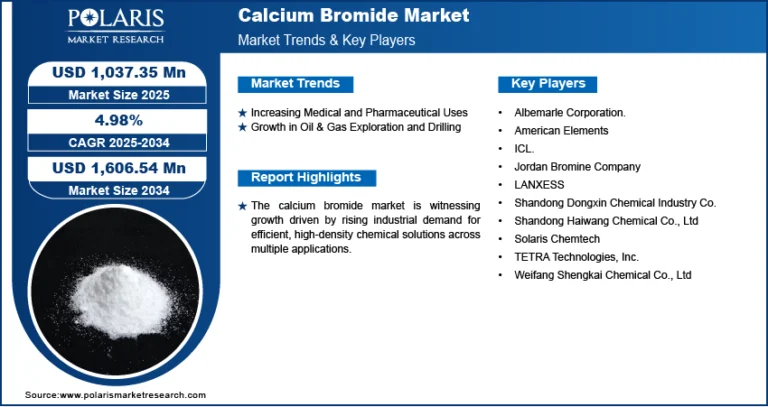High Purity Alumina Market Projected to Reach USD 20.26 Billion By 2034, Growing at a CAGR of 20.6%

The global High Purity Alumina (HPA) market size was valued at USD 3.11 billion in 2024 and is projected to grow from USD 3.75 billion in 2025 to USD 20.26 billion by 2034 , exhibiting a robust Compound Annual Growth Rate (CAGR) of 20.6% during the forecast period from 2025 to 2034 .
- Surge in Demand for LED and Semiconductor Applications: High purity alumina is widely used in the production of sapphire substrates for LEDs and semiconductor devices. With increasing adoption of energy-efficient lighting and advanced electronics, demand for HPA is growing rapidly.
- Growth in Solid-State Lighting Industry: The expansion of the solid-state lighting market, driven by government regulations promoting energy efficiency and sustainability, is fueling the need for high purity alumina in manufacturing sapphire-based components.
- Expansion of Electronics and Data Storage Technologies: High purity alumina plays a critical role in fabricating hard disk drives, plasma display panels, and other electronic components, especially in Asia Pacific’s booming tech sector.
- Increasing Use in Lithium-ion Battery Separators: HPA-coated separators are gaining traction in lithium-ion batteries due to their thermal stability and improved safety performance, supporting growth in the electric vehicle (EV) and consumer electronics sectors.
- Rising Investments in 5G and Telecommunication Infrastructure: As telecom operators deploy 5G networks globally, the demand for HPA-based components such as RF filters and substrates is rising significantly.
Market Size & Forecast
- Market Size in 2024 – USD 3.11 billion
- Market Size in 2025 – USD 3.75 billion
- Projected Market Size by 2034 – USD 20.26 billion
- CAGR (2025–2034) – 20.6%
High Purity Alumina (HPA), defined as aluminum oxide with a purity level exceeding 99.99%, is a critical material used in a wide range of high-tech applications including electronics, optoelectronics, ceramics, and battery technologies. Its exceptional properties such as high thermal resistance, chemical inertness, and optical transparency make it indispensable in advanced industrial processes.
The market is experiencing rapid growth driven by technological advancements in electronics, increasing electrification, and the ongoing digital transformation across industries. Additionally, the rise in clean energy initiatives and the shift toward sustainable materials are further boosting demand for high purity alumina.
Technological innovation continues to shape the future of the HPA industry. Companies are investing heavily in R&D to develop ultra-pure alumina grades suitable for next-generation semiconductors, laser systems, and quantum computing. Strategic partnerships between raw material suppliers and downstream manufacturers are also accelerating product development and commercialization. As global demand for high-tech components soars, the high purity alumina market is poised for exponential growth over the next decade.





